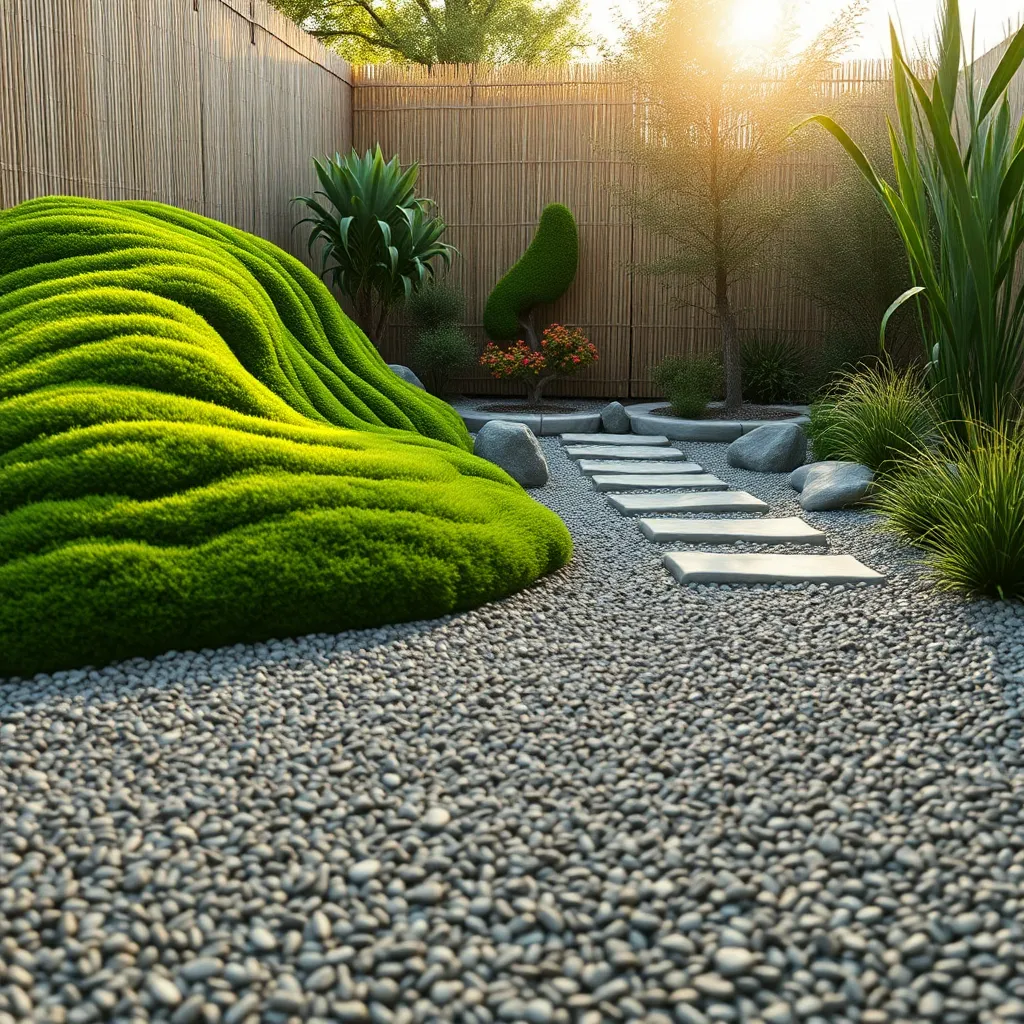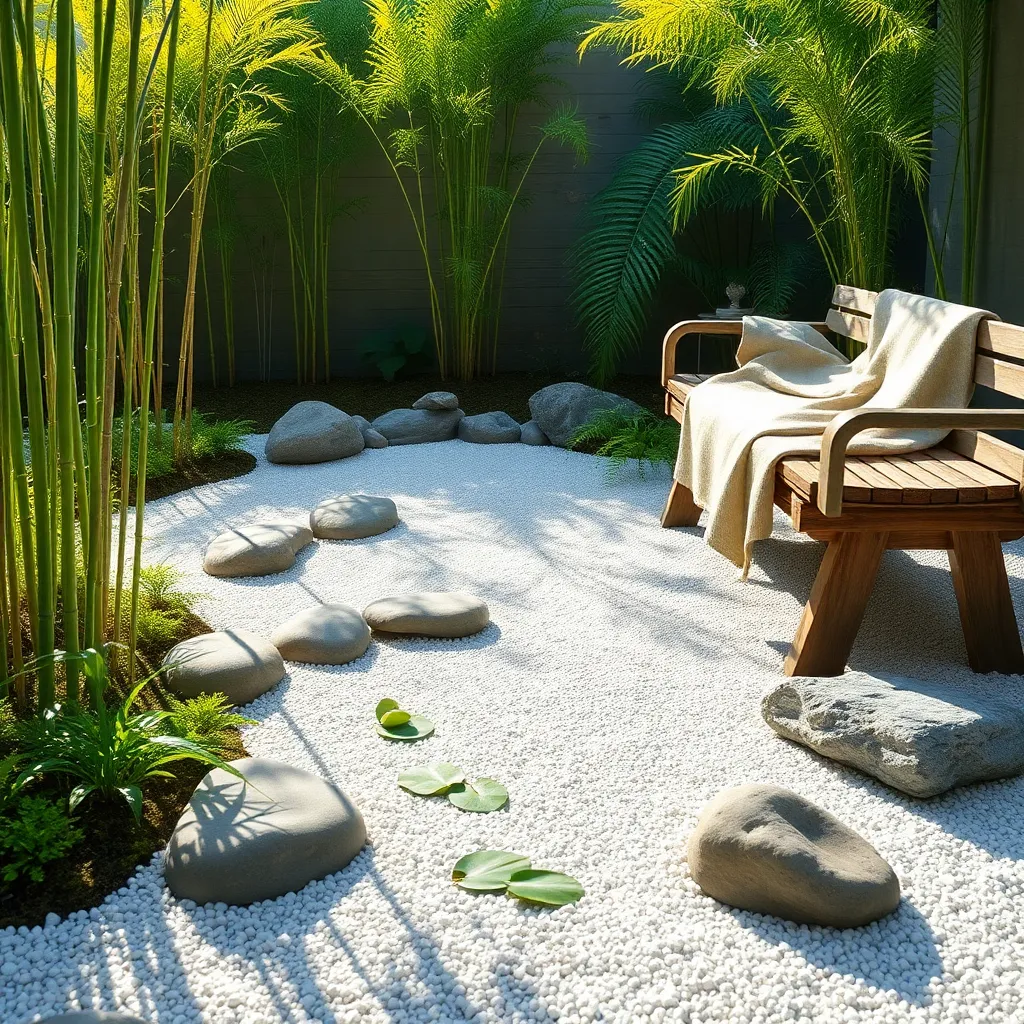Imagine stepping into your own sanctuary, where tranquility and balance greet you at the threshold, a retreat from the relentless pace of daily life. Creating a Zen garden at home offers both novice and seasoned gardeners a unique opportunity to cultivate not only a space, but also a state of mind that invites peace and mindfulness right into your backyard. A Zen garden, with its carefully raked gravel, artfully placed stones, and minimalistic plantings, is more than just an arrangement of elements—it’s an invitation to slow down, breathe, and appreciate the simplicity and beauty of nature.
For those just starting their gardening journey, a Zen garden is a wonderful way to explore the art of simplicity and intentional design. Even experienced gardeners will find joy in the meticulous, meditative process of shaping and nurturing this serene landscape. In this article, you’ll discover how to select the right materials, position key elements, and maintain a Zen garden that reflects your personal style and space. By the end, whether you’re in a city apartment or a sprawling countryside home, you’ll be ready to create a calming oasis that embodies the harmony and grace of a Zen garden.
Select an Ideal Location

Choosing the right location for your Zen garden is crucial to its success and tranquility. Ideally, you should look for a spot that receives partial sunlight, as too much direct sun can stress plants and dry out materials like sand and gravel too quickly.
Consider the natural flow and space available in your garden to ensure harmony and balance. A corner of your yard or a space near a window or patio can offer a serene view, making it a perfect fit for your Zen garden.
Next, think about the soil conditions of the chosen location. Ensure the soil is well-drained, as most traditional Zen garden plants, such as mosses and small shrubs, thrive in moist but not waterlogged environments.
For those living in areas with heavy clay soil, you may need to amend the ground with organic materials or sand to improve drainage. Alternatively, creating a raised bed with a blend of sand, topsoil, and compost can allow you to control the growing environment more effectively.
Outline Your Garden Design

Creating a Zen garden begins with outlining a design that promotes tranquility and simplicity. Start by sketching your desired layout on paper, incorporating elements like rocks, sand, and plants that are essential to a Zen garden.
Consider the scale and proportions of your garden to ensure each element complements the others. For beginners, it’s helpful to use a grid system to organize your space, allowing for a balanced and harmonious design.
Choose calming elements such as smooth stones and a simple water feature to enhance the serenity of your garden. Advanced gardeners might experiment with varying textures and heights, like incorporating moss or bamboo, to add depth and interest.
When selecting plants, opt for varieties that thrive in your climate and require minimal maintenance, such as ferns or hostas. Ensure your soil is well-draining, as Zen gardens typically favor a mix that prevents waterlogging, which can be detrimental to plant health.
Watering should be done with care, focusing on maintaining moisture without over-saturating the soil. For those with more experience, incorporating a drip irrigation system can provide consistent hydration while preserving the garden’s peaceful ambiance.
Gather Essential Zen Elements

To create a harmonious Zen garden, start by gathering essential elements that embody tranquility and simplicity. Rocks and gravel play a crucial role in representing mountains and water, serving as the backbone of your design. These materials should be selected and placed thoughtfully, with an emphasis on natural shapes and colors. For a beginner, small, smooth river rocks and fine gravel are excellent choices that are easy to work with.
Bamboo is another integral component, symbolizing strength and resilience. This versatile plant thrives in well-drained soil and can be grown in a variety of climates, making it an adaptable choice for many gardeners. To maintain bamboo’s lush appearance, ensure it receives adequate sunlight and regular watering, especially during dry spells. If you have limited space, consider dwarf bamboo varieties, which are perfect for creating a serene backdrop without overwhelming the garden.
Water features, such as a small pond or a gently bubbling fountain, can add a soothing auditory element to your Zen garden. If space is limited, even a simple stone basin filled with water can provide a calming effect. These features should be positioned in a way that complements the flow of the garden, enhancing the overall sense of peace and balance. Remember to regularly clean and maintain water features to prevent algae buildup and ensure the water remains clear and inviting.
Incorporating moss is a wonderful way to soften the hard lines of rocks and gravel, adding a touch of lush greenery that requires minimal maintenance. Moss thrives in shady, moist environments and can easily be introduced by transplanting patches from other areas of your garden. For those in dry climates, consider using moss alternatives like Irish or Scottish moss, which offer similar aesthetic benefits with slightly different care requirements.
Arrange Sand and Gravel

To begin arranging sand and gravel in your Zen garden, first select a well-draining area that receives adequate sunlight. This ensures that the materials do not compact easily and maintain their texture and appearance over time.
Begin by laying a base layer of coarse gravel to provide stability and improve drainage. This foundation helps prevent weed growth and maintains the garden’s low-maintenance appeal.
Next, spread a layer of fine sand evenly over the gravel, using a rake to create a smooth surface. This is where your creativity can shine, as the sand can be raked into intricate patterns that symbolize water or waves.
For added detail, consider incorporating different colors or textures of sand to highlight certain areas of your garden. This can create a sense of depth and contrast, enhancing the overall aesthetic.
Finally, regularly maintain your Zen garden by raking the sand to refresh patterns and remove debris. This simple act of upkeep not only keeps the garden looking pristine but also provides a calming, meditative experience.
Add Rocks and Plantings

Adding rocks to your Zen garden enhances its aesthetic and symbolizes strength and endurance. Choose rocks of various sizes and textures to create visual interest, and place them thoughtfully to mimic natural landscapes.
When selecting rocks, consider using smooth river stones or rugged boulders to suit your garden’s theme. Position larger stones as focal points, while smaller pebbles can be used to create pathways or borders.
Introduce plantings that complement the rocks and add a sense of tranquility to your Zen garden. Opt for low-maintenance plants like moss, ferns, or ornamental grasses, which thrive in a variety of conditions.
For beginners, moss is an excellent choice as it requires minimal care and can grow in shady, damp areas. Advanced gardeners might experiment with Japanese maples or bamboo, ensuring they have well-draining soil and are protected from harsh winds.
Watering frequency for your chosen plants will vary; moss typically needs consistent moisture, while bamboo prefers less frequent, deep watering. Pay attention to your garden’s microclimate, adjusting care routines as needed to maintain healthy growth.
Conclusion: Growing Success with These Plants
Creating a Zen garden at home is not just about crafting a serene outdoor space; it’s a journey into nurturing peace and balance within your relationships. First, we explored how the act of collaboration in designing your garden can strengthen communication. Then, we delved into the importance of patience, as tending to your garden mirrors the care needed in nurturing relationships. Third, we highlighted the role of mindfulness, encouraging you to be present with your loved ones as you are with your garden. Fourth, we discussed the power of simplicity, teaching us to appreciate the small, meaningful moments in life. Lastly, the resilience of a garden through seasons was a metaphor for enduring love.
As an immediate next step, choose one element of your relationship to nurture today, be it through a mindful conversation or a shared quiet moment.
Bookmark this article to revisit these insightful concepts and remind yourself of the peaceful, fulfilling relationships you aspire to cultivate. Remember, every act of care and intention in your Zen garden echoes the potential of your relationship success. Embrace this journey, and watch your connections blossom and thrive.
